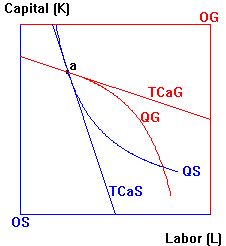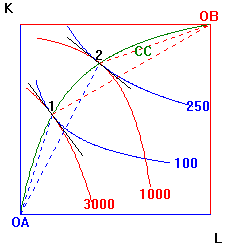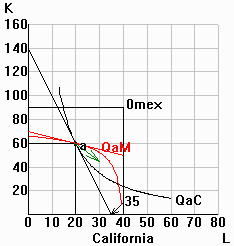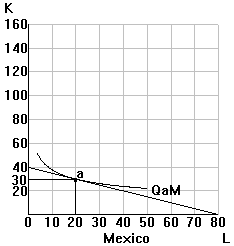| 1. | Use an Edgeworth box diagrams to demonstrate why the
following situation is inefficient: The United Steelworkers Union has been successful in
raising steel industry wages above the average level which prevails in industries
producing "other goods." (Illustrate capital as the alternative input to labor.) Note: PLs > PLg => PLs/PK > PLg/PK => MRTSs = PLs/PK > PLg/PK = MRTSg Answer key checklist: Did you make it clear which point the firms are currently at inside the Edgeworth Box? Tip: To construct an Edgeworth Box: (1) Draw box, label axes and origins. (2) Is allocation efficient? Yes => show a tangency. No = show a lens. (3) If you have a lens, choose the correct intersection point: How does relative value of X for the party at the lower left origin compare to the other party? Higher => choose the upper intersection; Lower => choose the lower intersection. |
 |


